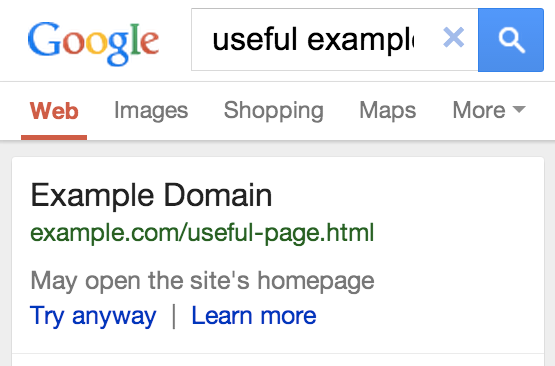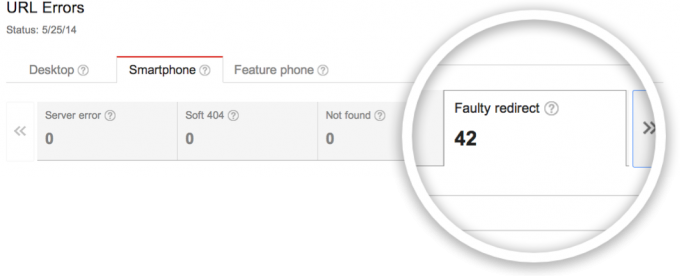Attention point of smartphone SEO: Google warning in redirect case
In the Google Webmaster Central Blog, an article "Posted on a precise page when redirecting a smartphone user" has been posted. Among them, the change in the Google smart search has been touched.
Roughly summarizing the article's summary and changes, it looks like this:
- There is a site that redirects (transfers) the smartphone user who came to view the content page to the top of the site for smartphone
- However, what the user wishes to see is "the page of that content" to the last, it is not "the top page of the site for smartphone"
- Since this is not good, we made a warning in Google search results on pages redirecting to unrelated pages
"Warning" displayed by smart search
The above "Warning" is as follows.

Under the URL (green letters), in gray
The homepage (top page) of this site opens
The homepage (top page) of this site opens
Below that are two blue links,
Still look at it | more
Still look at it | more
It is written.
If you think this is a "homepage (top page), let's see it, let's see it," then you should press "try see still", and if you do not want to see pages that are not related to search intentions, It is only to search for it.
There is also a warning in the webmaster tool of the site administrator
In the above Google blog article, we say "redirected to a page (such as a top page) that a smartphone user does not want is" a common annoyance ". This specification change will be a measure to improve the usability of Google smart search.
It seems that warnings are displayed on the webmaster tool of the relevant site to the administrator of the web who has done Google's Iwakazu redirect.

The corresponding number is displayed in the tab called "Faulty redirect" of crawl error (URL Errors). At the moment, there is no way to have you notify (warn) whether this "incorrect redirect" has occurred unless you use Webmaster Tools.
What if a warning comes out? Is there a penalty?
However, even if this warning is issued, we have not confirmed the information that it leads to immediate penalty at the moment.
If you receive a warning, as the crawl error has occurred as above, change the redirect to the page with the same information as the original page, or change the original page as it is by stopping the redirect If you do, it seems that warnings are withdrawn after Google bot crawls again.
By the way, there is also a story saying "This warning can be ignored in some cases".
In the above Search Engine ROUNDTABLE article, a webmaster who received an "incorrect redirect" warning but did not remember contacting Google
Sometimes this message is sent from Google a little "go ahead" even though there is actually no problem
There is a report that got a reply with "It is written," If you are confident 100% confidence, please ignore this message ".
"Learning" obtained by this change
Regarding the surge of mobile / smartphone users on the Internet, we also have some information from our company, but we can see the background behind the fact that Google is trying to make mobile search even more useful in these trends.
However, at the moment, we have not yet obtained information that a warning message about this "incorrect redirect" was confirmed by rice US English search and that a similar case occurred in Japan . However, in any case,
"Even if you made a smart site, even if you are redirected to the top of the site without asking questions, it is annoying to the user"
It seems to be.
Most of the webmasters who had been sent a warning with this change probably probably had done with a pure heart that they could see a smart site so they could see it.
However, whether it is a smartphone or a PC,
Search users are basically asking for "contents" and not "pages for smartphones or PCs".
If you misplace the order, there will not be much good for users and websites. In other words,
"Let's make information on site content more useful in the first place than to make a smash site in a hurry to say that smartphone sharing has come up"
That might be the lesson learned from this change in specifications.
No comments:
Post a Comment